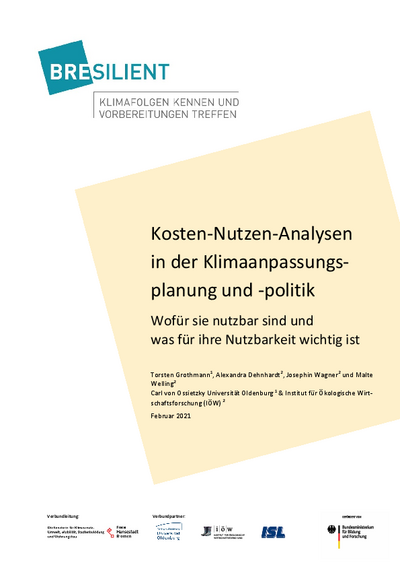Cost-benefit-analyses in climate adaption policy and planning How they can be used and what is important for their usability
Cost-benefit analyses (CBAs) can support decisions on public investments, for example in the context of climate adaptation measures, by determining the positive and negative effects of different options for action and comparing them in a uniform monetary value measure. This should make it easier for decision-makers from politics and administration to weigh up the various alternatives. Positive effects often concern so-called public goods, such as the effect of green spaces on the cityscape and air quality. Such environmental effects can also be evaluated using appropriate environmental economic methods and included in an "extended" CBA. CBAs can contribute to the transparency and rationality of decision-making through the systematic process and provide decision-support information on how to use scarce resources most efficiently.
In the "BREsilient" project, an extended CBA was created to determine the benefits of selected green climate adaptation measures. A series of workshops with Bremen administrative and practical stakeholders accompanied this process. During the workshops and supplementary guideline-based interviews with representatives of the Bremen administration and municipal enterprises, the usability of CBA as well as the learning effects achieved in the process were analyzed in cooperation with the Carl von Ossietzky University Oldenburg. Potential uses of CBA to weigh or prioritize between measures, to legitimize political decisions, but also to raise awareness for the effects of climate adaptation measures were in the foreground here.
In the present report, on the one hand, the results on the usability of the CBAs of adaptation measures elaborated in "BREsilient" for Bremen's policy and administration are presented, on the other hand, factors influencing this usability are discussed.



